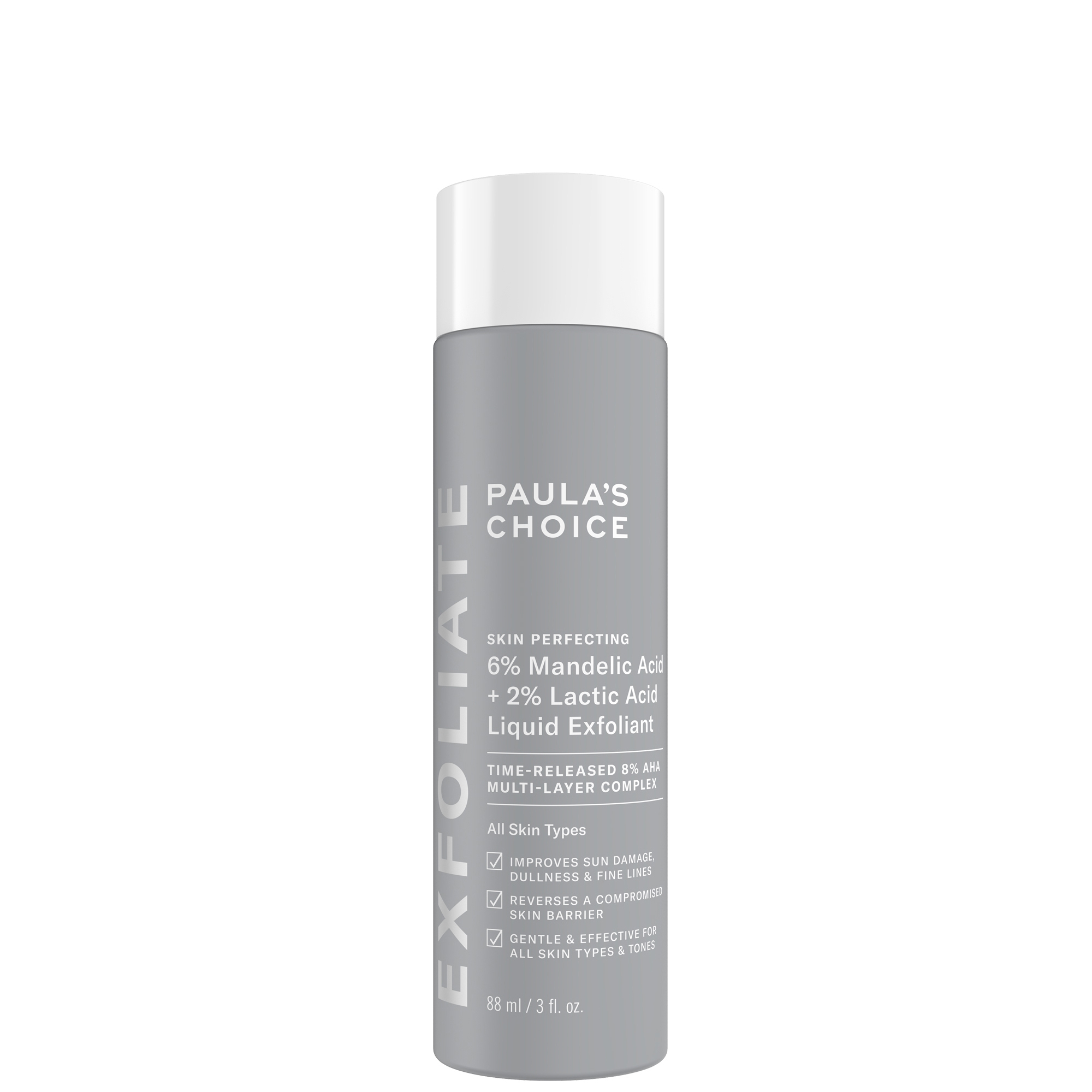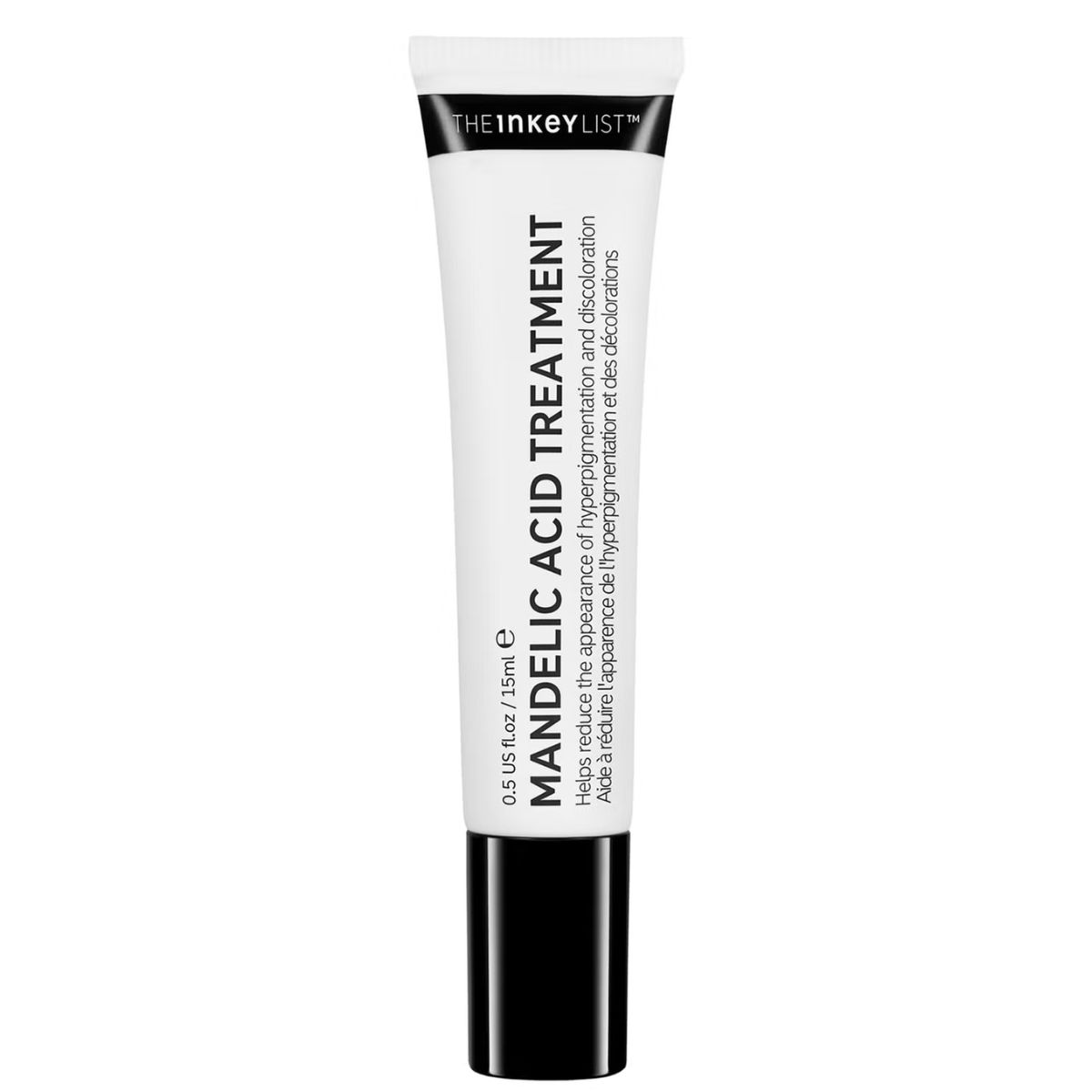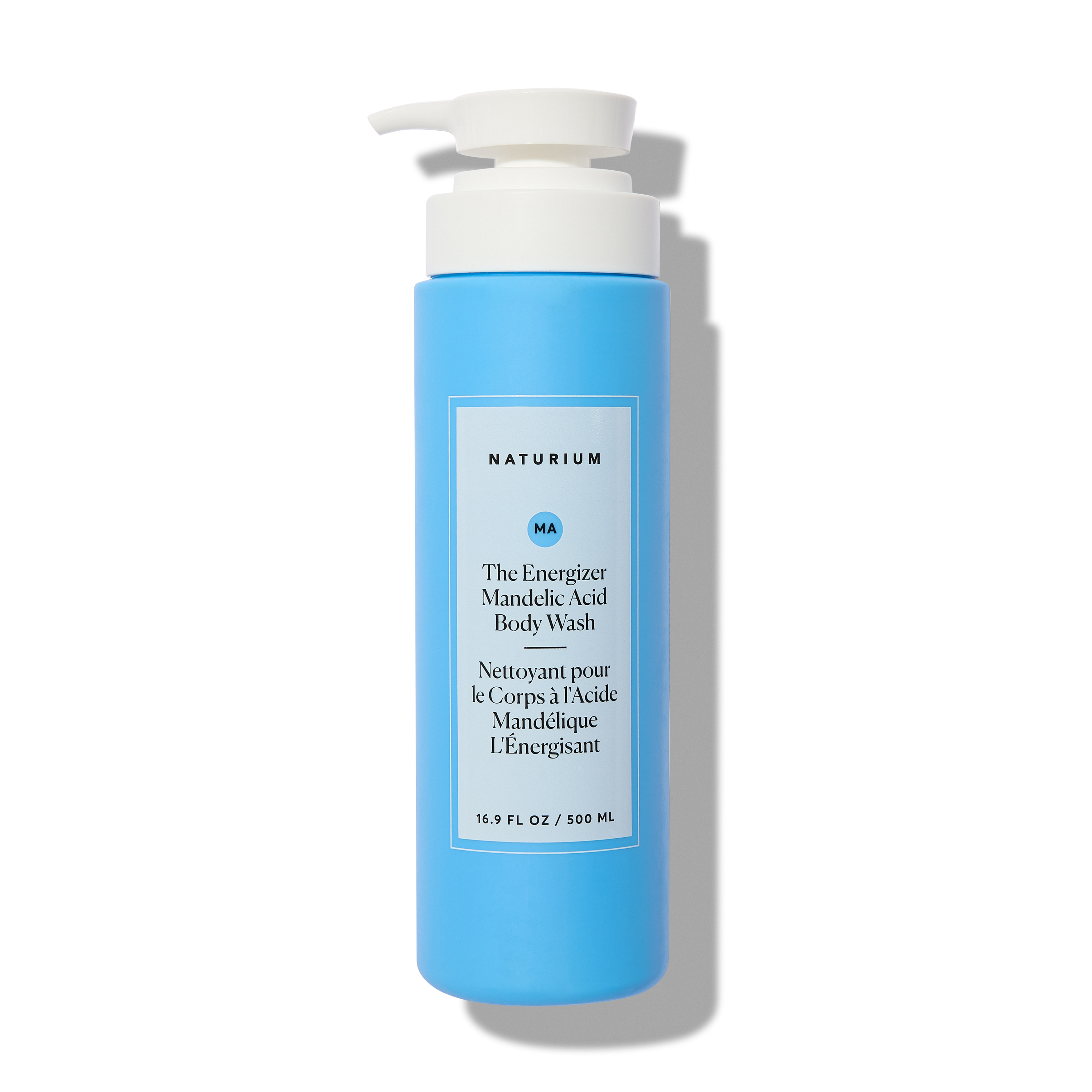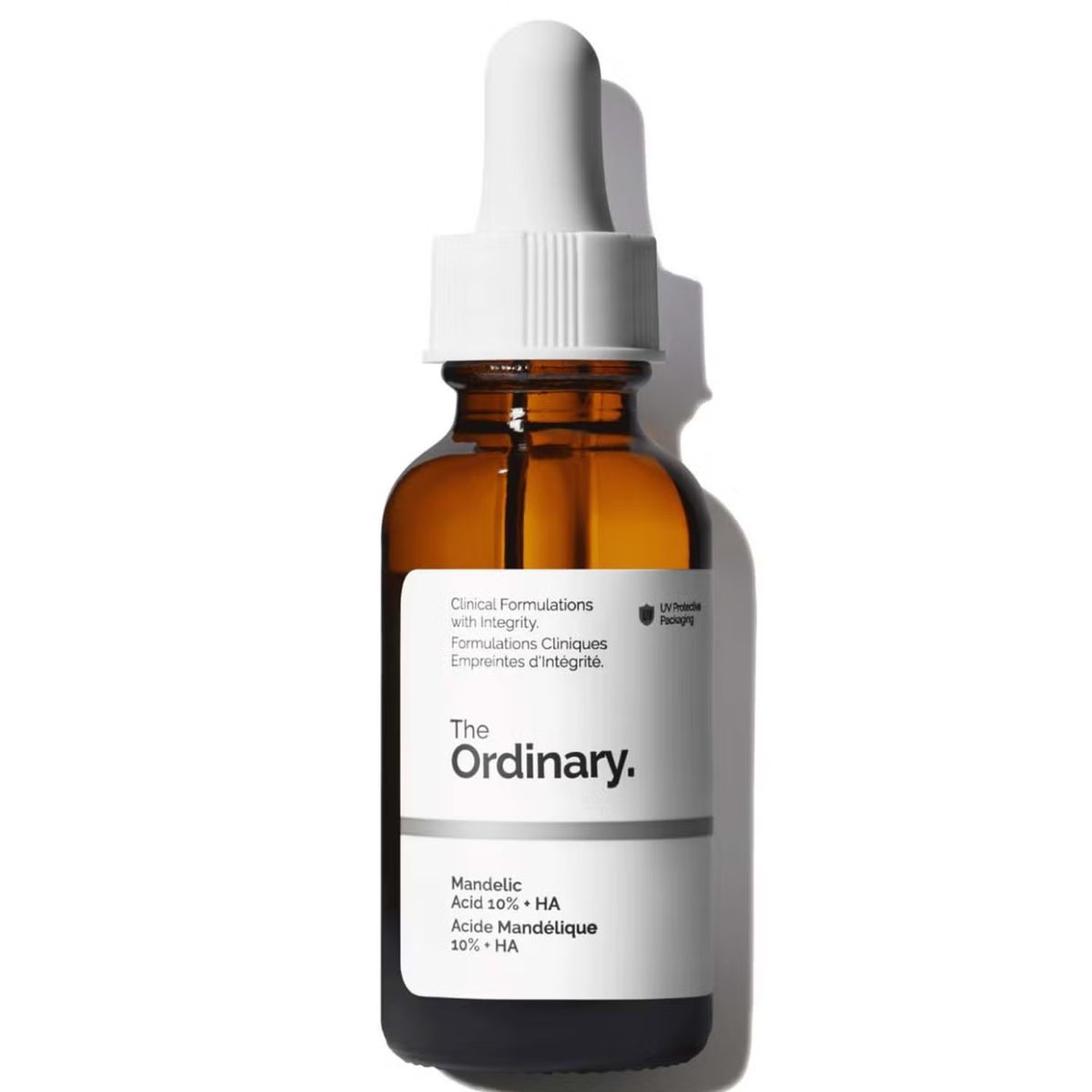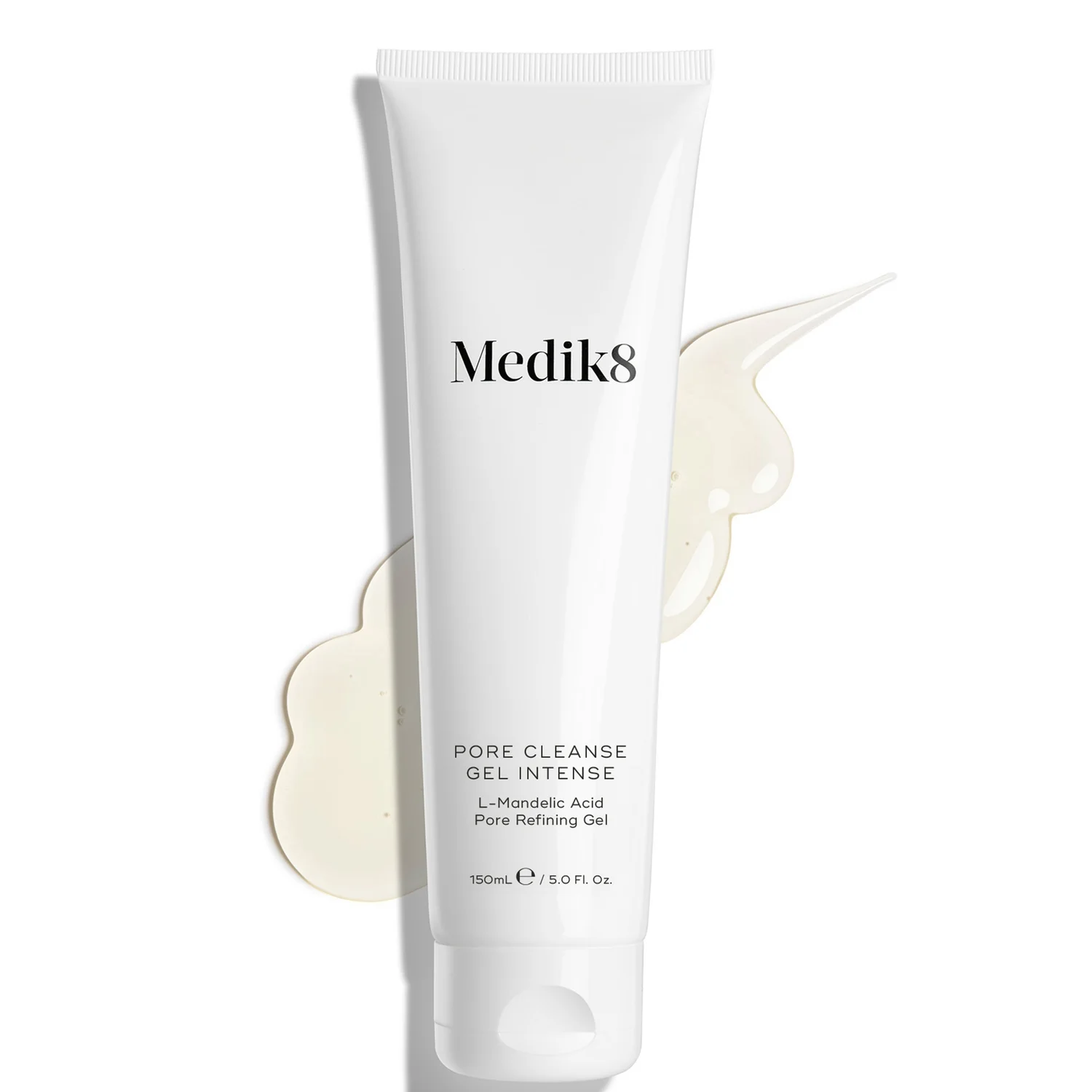Mandelic Acid Is the Gentle All-Rounder Exfoliant to Tackle Dry, Dull Winter Skin
It's the AHA for all skin types


A new skincare acid has entered the fore, and it might be even better than seasoned favourites like glycolic acid and salicylic acid: meet mandelic acid. Although I've regularly relied on strong chemical exfoliants to keep my acne-prone skin happy, plenty of people find them just too irritating for regular use—which is where the much gentler formulation of mandelic acid comes in.
"Mandelic acid is a type of exfoliating alpha hydroxy acid (AHA)," says Heather Wish, Senior Education Manager at Paula’s Choice. "It’s usually sourced from bitter almonds or made synthetically. Thanks to its larger molecule size, mandelic acid is one of the gentlest AHAs for the skin."
Benefits of AHAs include gentle exfoliation, boosted radiance, and a reduction of fine lines and hyperpigmentation, all of which mandelic acid offers too—just with a lower chance of causing irritation and redness on more sensitive skin types. Here's what you need to know about the powerhouse ingredient and whether it's right for you.
How does mandelic acid work?
"Like other AHAs, it works by loosening the bonds between skin cells, helping dull and dead cells shed away," explains Wish. "This process reveals fresher, healthier, and more radiant skin underneath.
"AHAs are water-soluble, so they typically stay near the skin’s surface. However, mandelic acid is unique as it can penetrate a little deeper and even become oil-soluble, allowing it to deliver gentle yet multi-layered benefits."
What does it do to your skin?
"It helps to even out skin tone, tackles sun damage, smooths texture and helps to decrease the look of fine lines and wrinkles," says Wish.
Who should consider adding mandelic acid to their skincare routine?
"Mandelic acid is suitable for all skin types, but it’s especially great for sensitive skin because of its gentle nature," explains Wish. "If your skin tends to be dry, mandelic acid might be a good choice too, research suggests that at higher concentrations, it can help support healthier sebum production. And for those with oily skin, no need to worry: leave-on mandelic acid exfoliants aren’t known to increase oiliness."
Celebrity news, beauty, fashion advice, and fascinating features, delivered straight to your inbox!
Is mandelic acid better than retinol?
"Mandelic acid and retinol are two very different skincare ingredients. Mandelic acid acts as an exfoliant, while retinol is an antioxidant and a powerful cell-communicating ingredient," explains Wish. "Once retinol is absorbed, it can signal living skin cells to behave like younger, healthier cells and boost the production of new ones.
"Retinol works deeper in the skin, encouraging cell turnover from the inside out, not on the surface. That’s where exfoliants like mandelic acid (or BHA) come in, helping to clear away dead, dull cells from the upper layers. Research shows that pairing retinol with gentle, well-formulated exfoliants like AHAs can improve results and even help fade hyperpigmentation."
What are the dos and don'ts with mandelic acid?
"If you’re new to exfoliation or have sensitive skin, start slowly just once or twice a week and see how your skin responds," suggests Wish. "Over time, you can adjust to your ideal routine. Exfoliation is all about balance, so take it step by step. After cleansing, apply mandelic acid with your fingertips or a cotton pad. There’s no need to rinse."
Shop mandelic acid

Amelia is currently Acting Junior Shopping Editor at Marie Claire UK. With a keen eye for lifestyle trends and a focus on quality over quantity, she is very clued up on the best products and brands on the market. She previously worked as a senior writer for woman&home, covering everything from product reviews and nail art trends to reporting on fashion weeks and the best-dressed celebrities at red carpet events.
